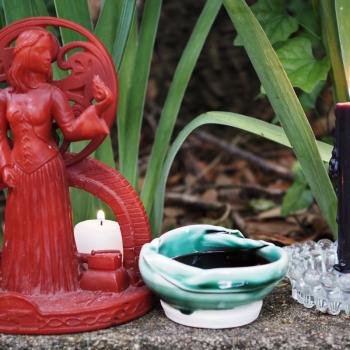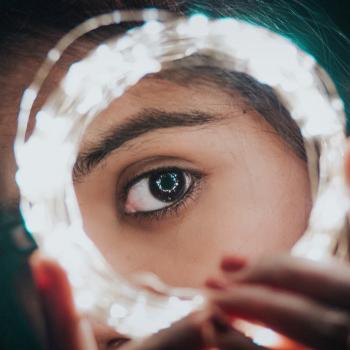I thought for today’s blog I’d tackle a quick list of the most common things I see people saying about fairies in modern American culture that diverge widely from actual folklore and traditional beliefs. Of course I see a much wider range than just these but a top 5 of the most common modern misunderstandings I run across about fairies as I travel around the internet. Most of these are rooted in confusion in popular culture over the last hundred years or so, where one view of fairies from a specific group came to dominate over the older, wider cultural views. Most also do hold some truth but fall apart when projected out onto all fairies as a whole.
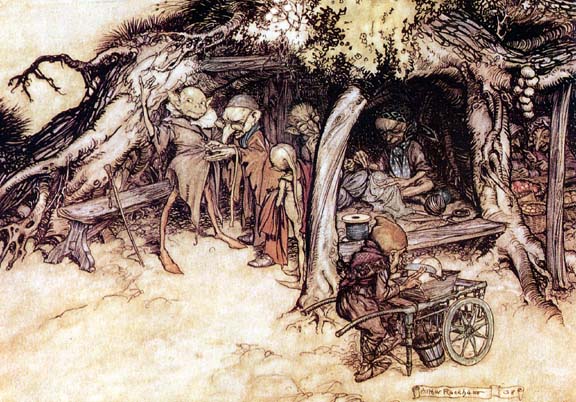
1. Fairies Are Nature Spirits
Probably the most widespread thing I see, its not that it’s entirely wrong so much as it’s a vast over generalization. Some fairies are nature spirits, but many are not no matter how we are trying to define nature spirit. Some of what we often call fairies are nature spirits, that is spirits who are connected to or embodied in natural objects. The spirit of a river or a stone, for example, or the spirit of a tree would be a nature spirit and may also be considered a fairy by some people. But many other kinds of fairies are not nature spirits but other sorts of beings that may best be described as ‘Otherworldly’, that is they come from the Otherworld or move between the Otherworld and our world. These Otherworldly beings, unlike nature spirits, are not tied to specific locations or natural items but can and do move between locations and even continents in our world.
2. Fairies Are Vegetarians
This is one I’ve seen more often in recent years, the idea that fairies eat only fruits or vegetables, or sometimes subsist on things like dew or flowers. I’m not entirely sure where this idea comes from although I can guess that it’s the culmination of the wider image of fairies being the size of insects and adorned with butterfly wings. There are some poems from the late 19th and 20th century that play into the idea of fairies drinking dew and feasting on berries and such, and these may also contribute to this idea, obviously extrapolated out to all fairies in general. I have only run across one anecdotal example of a person in the living Fairy Faith who believed fairies didn’t eat meat but in that case the idea was bound up in specifically Catholic cosmology and the concept that fairies were averse to the color red which represented salvation.
In the wider bulk of fairy belief across the centuries there is abundant evidence that many types of fairies eat various sorts of meat including fish, duck, deer, pigs, cows, and humans. While we might suppose that there are some types who prefer other forms of sustenance there’s no reason to doubt that many do eat both raw and cooked meat.
3. Fairies Are All Winged And Tiny
Speaking of fairies being insect-like, possibly the most common misunderstanding about fairies is that the word itself refers exclusively to tiny, winged beings who are more often than not depicted as female. This is almost certainly rooted in late Victorian and early 20th century artwork and the later influence of animated movies but has become so widespread that I have even seen people advocating for new terms that describe Otherworldly beings more generally because they consider fairy to exclusively mean these tiny winged beings. Obviously language does change and evolve, however the word fairy more widely is still used by academics and in many traditional cultures (not heavily influenced by american popculture) to mean all Otherworldly beings which reflects the older meaning of the word.
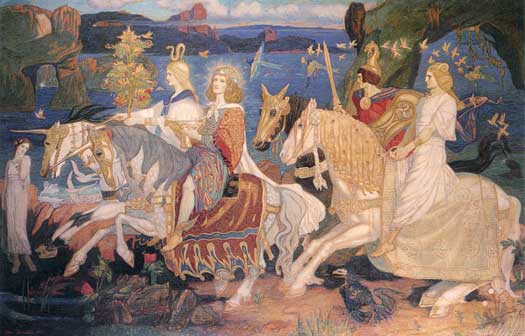
Not all fairies are small or winged. In fact the idea of fairies having wings is itself very new in the grand scheme of things and comes from 18th century art and 19th century theater productions. After it became popular in art and theater we start to see fairies depicted in stories with wings and only very recently, into the 20th century, have people started to see them with wings. In older folklore and personal accounts we see fairies in a wide range of appearances from human-like to animals, from small to giant sized. There are still an abundance of anecdotal accounts into the 21st century of people seeing or engaging with larger fairy beings without wings and with fairy animals, so clearly small and winged is not the sum total of how fairies appear.
4. Fairies Are Helpful Guides
I’ve been running across this one for a few decades and I believe it’s caused by the blending of fairy beliefs with more modern views of angels, where the fairies are seen as a type of angelic spirit themselves. This is a bit complicated to unpack because there certainly is a strain of thought in various cultures that says the fairies are a type of angel who were trapped between heaven and hell when Lucifer rebelled against God. What is important to understand is the context of that belief and that the fairies as angels there are not benign helpful spirits but a kind of inbetween-demons-and-old-school-angels. There was massive debate by the people who believed this about exactly how dangerous these fallen-fairies were and whether they could or could not be redeemed into heaven. they were never seen as ‘earth angels’ or similar and were often known to cause harm and even death. the modern view which turns them into helpful guides takes this older belief entirely out of context and simply equates fairies as angels to what the modern person wants those angels to be. In this case the original context is vital.
A fairy can certainly be helpful to a person they have a connection to or owe a debt to, but the bulk of folklore and modern living beliefs in the cultures which have never stopped believing in these beings makes it clear they are as prone to being harmful as helpful. And in some cases what they consider helping may have the effect of harming. It’s also worth considering that humans are not the center of all other beings concern in the universe and so not all spirit beings are interested in guiding humans to being better humans. When it comes to fairies and this subject at the least it’s usually a good idea to approach them the way you would another human being, and not assume anything much about how they feel about you and whether or not they will jump at the chance to help you in any way.
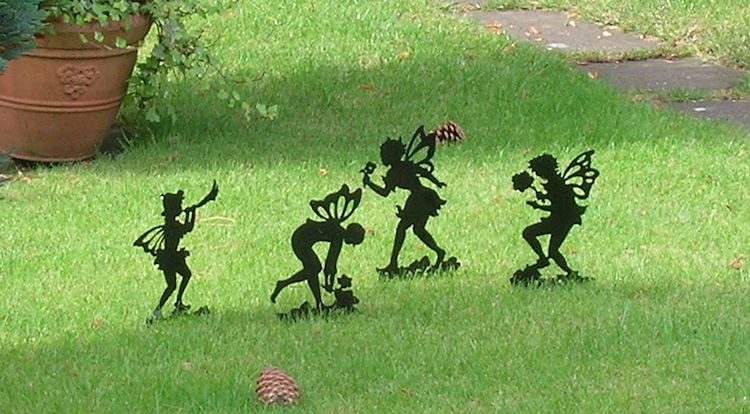
5. Fairies Are Non-Physical and Lack Form
This is a much newer concept, starting to overtake the ‘fairies are winged and tiny’ idea but it is gaining ground especially among people or groups influenced by the current incarnation of the New Age movement. This idea, simply put, says that fairies are entirely non-physical beings who may appear as a ball of light or undefined shape and influence humans in non-physical ways such as through mood. Many of the photographs you will find if you search online seem to be based on this approach (when it isn’t just pareidolia).
In older folklore and even some modern accounts the nature of fairies physicality was a bit ambiguous but the overall consensus seems to be that they could have tangibility at times and were able to interact directly and physically with humans and with animals. Although they are also described as being able to change shape and become invisible at other times, there are enough accounts of physical interactions with fairies to let us say that – at the least – they are able to have a physical form if they choose to.
What Can We Say About Fairies?
Fairy beliefs do change and evolve but in our high tech world where anyone can write anything and share it online, and then have it taken as true and shared, we should be cautious about accepting an idea as true without some discernment and fact checking. Fairy folklore has existed for a very long time and still exists in many places and while the new beliefs don’t necessarily have to be thrown out we should respect and listen to the older folklore and the living cultures. the new should never replace the old and the old should never be thrown out for the new. These various misconceptions are important to understand, both what they are and the truth behind the confusion. I strongly encourage people to dig deeper into the beliefs if this subject is one that interests you.
Ultimately fairies are a very broad category of beings and any blanket statement that is made can usually be contradicted. We should be careful about ever seeing them as too easily defined or described and instead respect the variety presented by these Otherworldly beings and the richness of the belief system attached to them. My first rule of Fairy is that there’s an exception to every rule.







